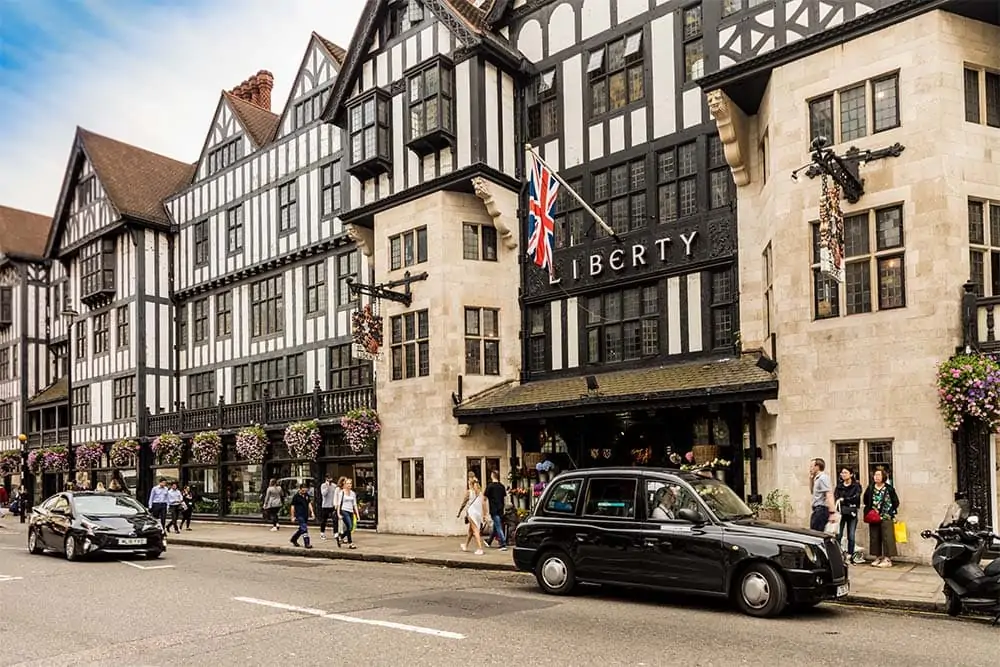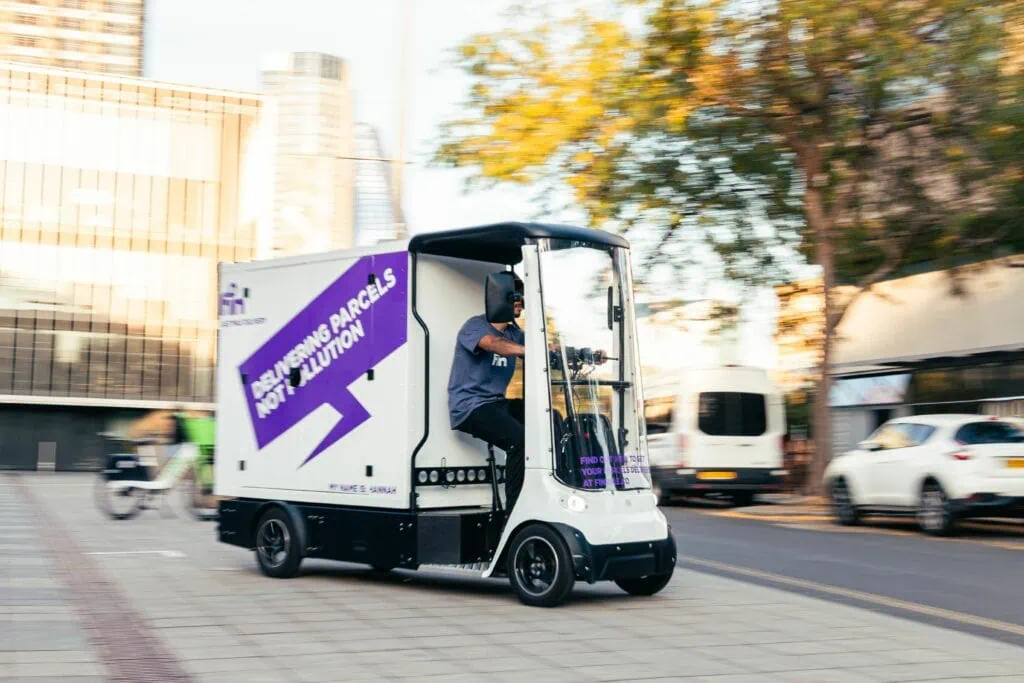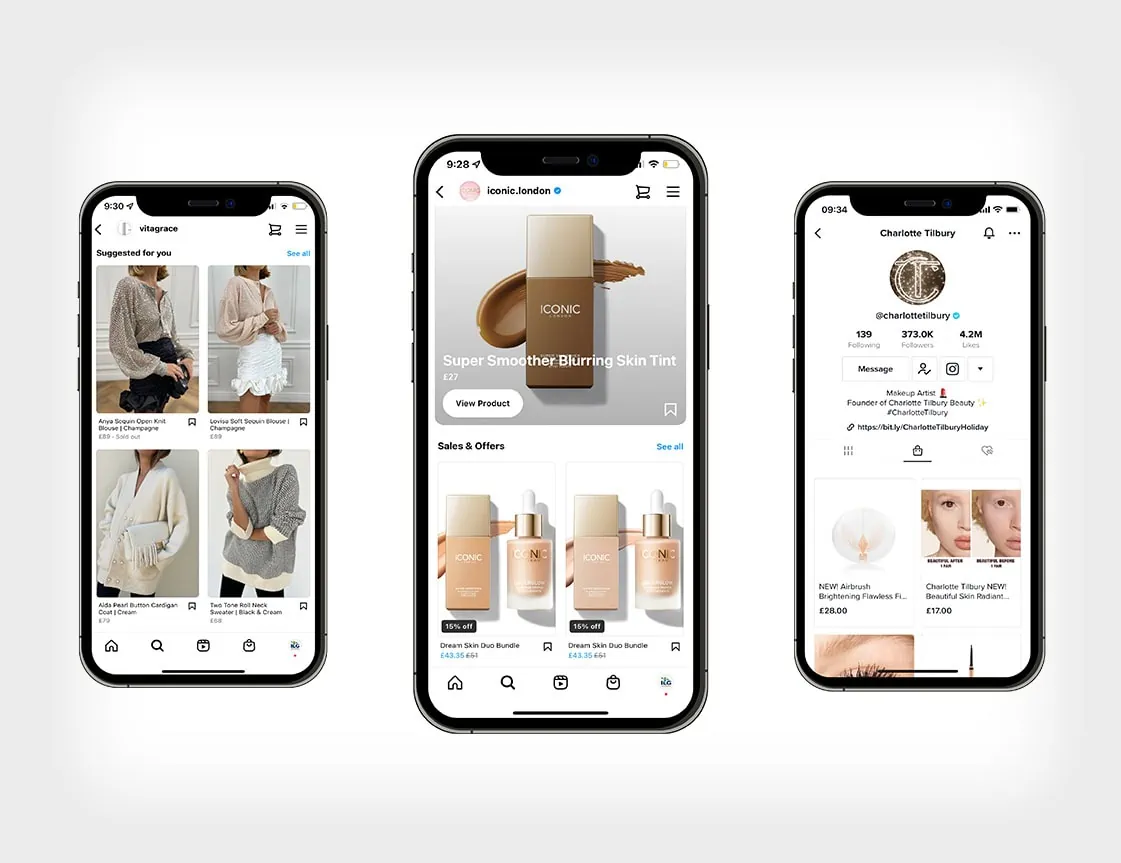
As social commerce strategy booms for fashion, beauty and wellbeing brands, the ability to respond to sudden peaks in demand is becoming increasingly important.
In this article, we look at how brands are using social commerce strategy to expand their audience and smooth the buyer journey, and the role of e-commerce fulfilment in ensuring that they can deliver on a burgeoning level of expectation.
What is social commerce?
Social commerce is, quite simply, the sale of goods on social media. It provides the entire end-to-end shopping experience, from product discovery to checkout, all on the same social platform.
In this respect, it is different to e-commerce. Rather than having to go to specific websites to shop for goods they’ve come across elsewhere, customers get to see, share and discuss products on their favourite social platforms (e.g. Instagram, Facebook, Pinterest, TikTok and Snapchat) where they spend most of their time.
Thus, social commerce turns online shopping into a social experience, the digital equivalent of strolling down the high street with friends, spotting things, sharing opinions and buying as you go. Customers can expand their research with ease, checking out the sentiments of other platform users and directly asking retailers for more information.
The ability to do all this on one platform greatly simplifies the customer journey, increasing the likelihood of a prospect following through from discovery to purchase. And, because that platform happens to be where they go for entertainment and social interaction too, it’s a golden opportunity that retailers are jumping on.
How popular is social commerce?
The popularity of social media as a place to shop is booming and is forecast to keep growing. In the US, 30% of internet users now shop on social media. In the Millennial and Gen Z age groups, that figure stood at 48% in 2019, so we can reasonably assume it is now more than half. In China, social commerce is even more popular and the trend is rapidly spreading west.
By 2025, global e-commerce sales are predicted to have doubled from their 2020 level to $1.6trillion. The value in the market is enormous and it is moving increasingly onto social media and influencer marketing. Global sales through social media platforms were estimated at $992billion in 2022 and are expected to treble by 2026 to around $2.9trillion. Consumer habits are dictating the trend. According to Facebook, 81% of shoppers say they use Instagram and Facebook to research the things they want to buy.
Meanwhile, a Google study for Cosmetic Executive Women found that only half of beauty consumers have a specific retailer or brand in mind when looking for purchasing inspiration. This reflects the opportunity for brands of all sizes to make an impact through social commerce. One standout example is Iconic London, which launched its Prep, Set Glow spray in 2018 and within six hours it had sold out. The cult product is loved by beauty bloggers, influencers and celebrities ranging from Love Island contestants to the Kardashians.
How are brands selling on social media?
The opportunities for selling on social media are many and varied, according to the facilities offered by each platform. Some have their own native shops and marketplaces, while others provide curated shopping lists and live shopping events.
You can create a social media storefront, put shopping links in your organic posts, add a shop tab to your profile, share user-generated content featuring your products, post shoppable paid ads, offer branded content to social media influencers and post product videos such as tutorials. Currently, the use of video, influencers and live shopping are the strategies making the biggest impression in social commerce.
For retailers, it’s a medium that offers extensive marketing opportunities. Audiences can be precisely targeted, aided by a wealth of available customer data. Engagement with customers is seamless too. Social media shopping offers the opportunity to chat with your customers to gather feedback, and encourage them to message you with enquiries and comments, enabling a highly personalised level of customer service which strengthens the relationship and builds brand loyalty.
Social commerce and fulfilment
Fashion, beauty and wellbeing brands that are well-versed in the use of social media and influencers in their marketing will be aware of the sudden spikes in demand that this can generate. A product can rapidly go viral when endorsed by the right social media influencer. As brands extend their use of social media from marketing to social commerce, the likelihood of such spikes will increase.
When it comes to fulfilment, therefore, brands need not only to make sure their fulfilment houses are set up technically and operationally to process orders directly from social media platforms, but also that they have the capacity and flexibility to respond to sudden peaks in online orders.
At ILG, we have shaped our business over recent years to make sure we can support our customers in responding to the constantly changing landscape of the digital marketplace. All our facilities are equipped to fulfil social commerce orders and have the built-in flexibility to handle sudden surges in demand.
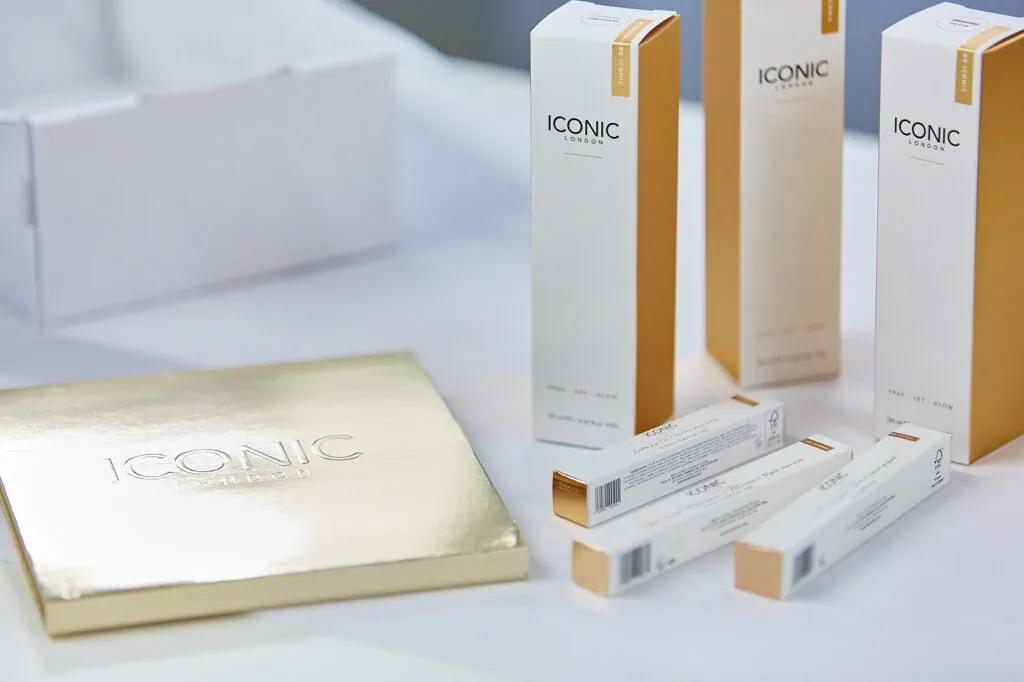
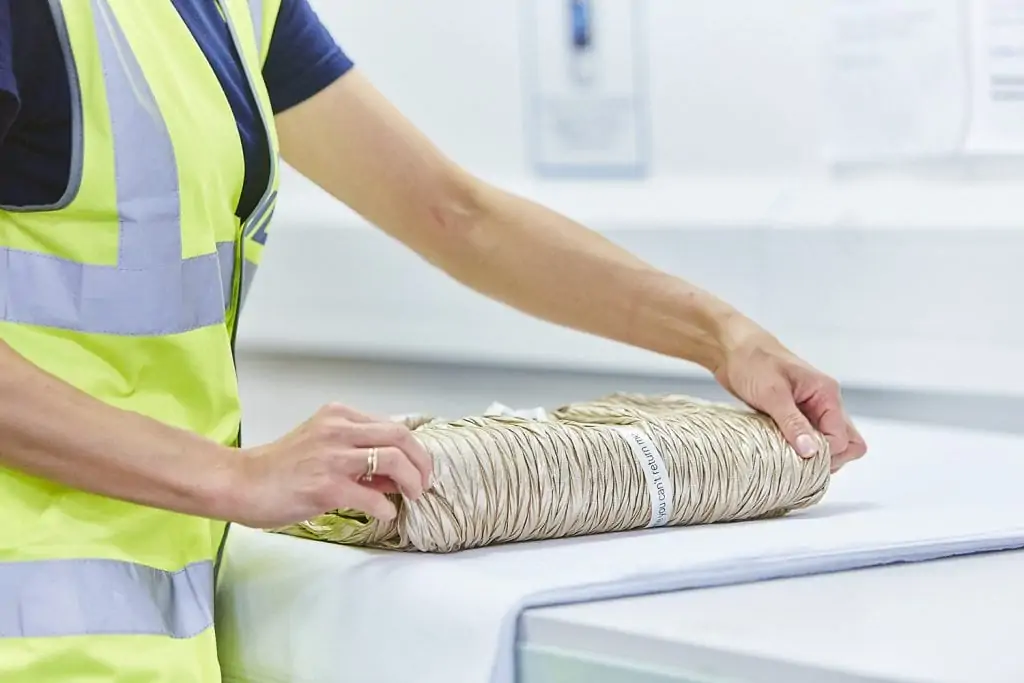

The opening last year of our biggest facility yet – ILG Brackmills in Northampton – increased our capability in this regard. At full capacity, ILG Brackmills can process 35,000 orders per day. Its Midlands location also enables us to extend our carrier times from 6pm to 10pm, thus adding four hours to our daily fulfilment capacity.
Of course, social commerce opens up the global marketplace too, so our facilities in Wroclaw, Poland are another plus. These enable our customers to place stock closer to the major European markets, particularly Germany, and avoid shipping delays brought about by the administrative burden resulting from Brexit.
Last Christmas, delivery and stock issues were the key worries for Christmas shoppers. This year, the rising cost of living is the main concern. This is likely to drive more customers online in search of inspiration and bargain purchases. The time for a social commerce strategy is now.
Discover Social Commerce Fulfilment at ILG
If you are looking for exemplary social commerce fulfilment for your brand or business then get in touch with our friendly team at ILG for more information about our services today, or check out our FAQ page to find out more.
Contact Us
More insights >
A Guide to UK Market Entry for Canadian Brands
Canada’s traditional export routes have been radically changed recently and the UK market could be a good alternative to the US. Read our guide to UK market entry.
ILG Partners with Fin – Sustainable Logistics
ILG is thrilled to announce its new partnership with Fin Sustainable Logistics, a pioneer in zero-emissions delivery services.
